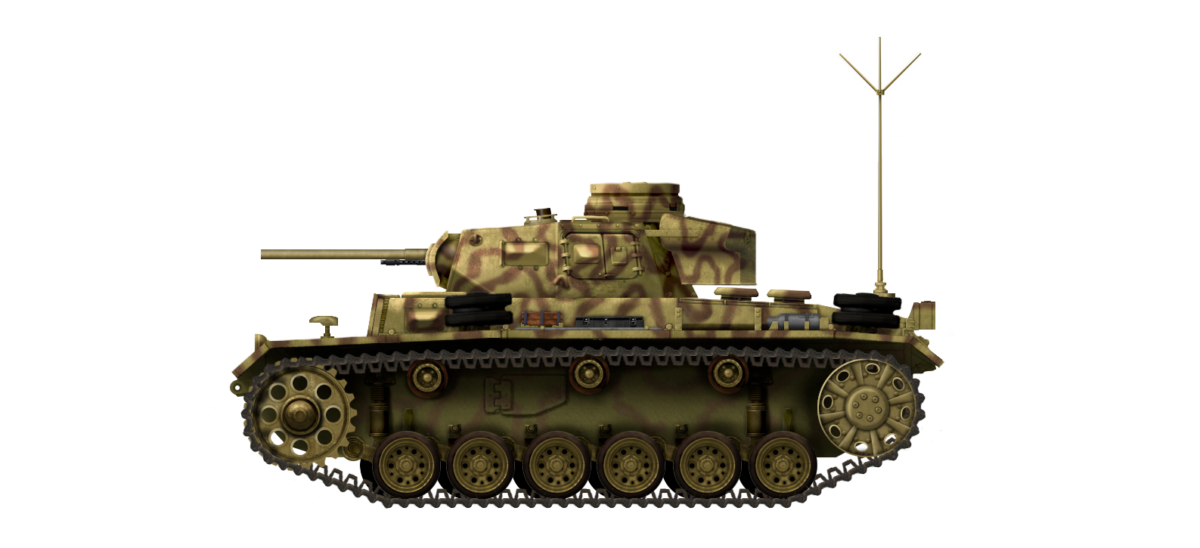 German Reich (1943)
German Reich (1943)
Observation Tank – 262 Built
The Panzerbeobachtungswagen III (German: armored-observation-vehicle), also known as Sd.Kfz.143, was one of the variants of the common Panzer III medium tank. Although the conversion was fairly simple, it was one of the most specialized vehicles in this tank family. The Sd.Kfz.143 was designed for the artillery observers assigned to self-propelled batteries to better record the fall of shot and adjust fire effectively.
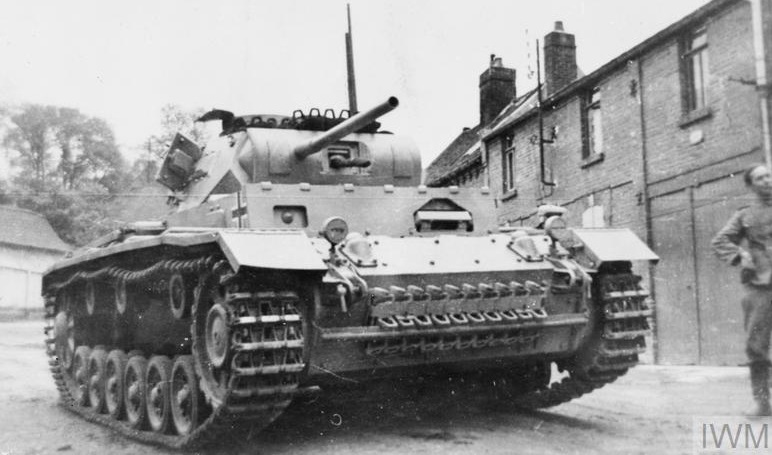
Development and production
The Pz.Beob.Wg.III project started at the end of 1942, after the great successes of the German offensives ended. The German army needed observation vehicles for the Hummel and Wespe mobile artillery units. These observation vehicles had to be within visual range of the artillery target and help correct the artillery fire. The new vehicle had to have the ability to survive on the frontline (like tanks or assault guns) and to communicate with unit commanders or other armored vehicles that worked behind the frontline. Using a tank for this was the best solution, as it had good off-road properties, strong armor and carried a radio set. The first project for such a vehicle was based on the Pz.Kpfw.V Panther, the Pz.Beob.Wg.V. However, the production of the Panzer V was delayed, so engineers chose another tank as a basis – the Pz.Kpfw.III (Sd.Kfz.141).
The previous observation vehicles were very diverse. Sometimes, this role had been done by unarmored vehicles or command tanks (like the Sd.Kfz.265 or Pz.Bef.Wg.III) or reconnaissance armored cars. The only specialized vehicles which were serially produced were the Sd.Kfz.253 and Sd.Kfz.250/5. However, these half-tracks were mainly used with Sturmgeschütz units. Improvised artillery observation vehicles, like the Pz.Beob.Wg.II, were also built.
By 1942, the Panzer III was starting to become outdated. Its armament was inadequate to take on the more recent Allied tanks and its armor was inadequate against enemy anti-tank fire. However, it had a simple, proven, and reliable chassis on which to build conversions. Thus, it was a good choice at this point, as it gave the crew decent protection from enemy fire and was similar in construction to the other vehicles based on the Pz.Kpfw.III (like the StuG III or Bergepanzer III). It would also use the same spare parts as the other vehicles in the family.
The prototype of the Pz.Beob.Wg.III was ready before January 1943, when production started, and the first tanks were in use in June the same year. By April 1944, 262 had been built (however, a figure of 270 is also mentioned) at Deutsche Eisenwerke, in Duisberg. The main variants used for the conversion were obsolescent variants of Panzer III – from Ausf.E to J. However, later, the Ausf.L and M versions were converted as well. As a result, the Pz.Beob.Wg.III inherited a number of sub-variants depending on the parent chassis.

Suspension
The Panzer III Ausf.E was fitted with torsion bar suspension with six road wheels on individual swing axles. Three track return rollers were positioned above the road wheels. The engine was placed in the back of the hull, while the gearbox was in the front (between the seat of the driver and the seat of the radio-operator). All subsequent variants of the Panzer III (as well as all vehicles based on it) kept the same arrangement. However, a lot of other things were changed in later variants – like in the Ausf.G, where the tracks were extended – and the wheels were adapted to it. Also, a lot of details (like armor, driver’s viewfinders or engine) were improved in the Ausf.F-L variants.
Modifications: a tank that did not fight
The main visual differences between Pz.Kpfw.III and Pz.Beob.Wg.III were contained in the turret and especially noticeable on the front. The cannon was removed and replaced with a ball mount for a machine gun. On the right side of the mantlet, a dummy cannon was installed – a simple aluminum tube masquerading as the 50 mm KwK 38 gun. Interestingly, the earlier Pz.Bef.Wg.III tanks had a more realistic dummy. Moreover, the front armor was increased to 50 mm in vehicles based on early variants of the Panzer III (the Ausf.E-G had only 30 mm of front armor)
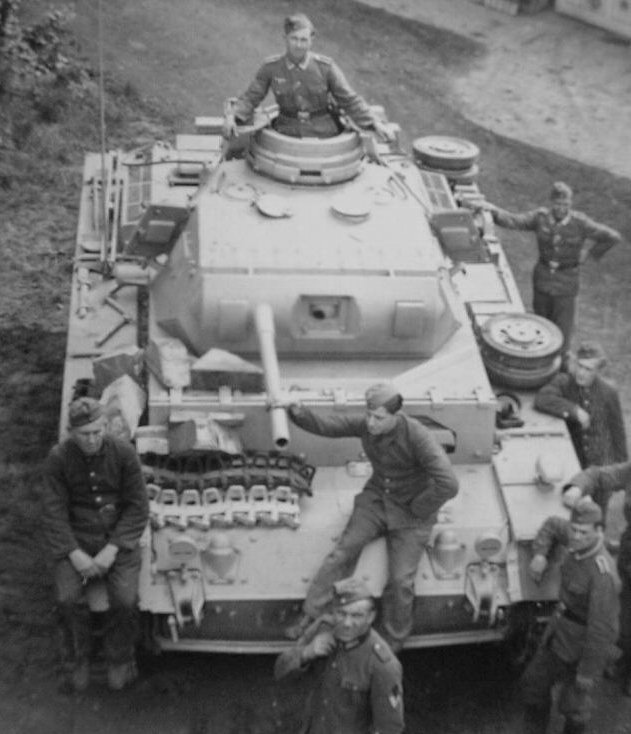
The roof of the turret was also altered. The TBF-2 periscope (Turmbeobachtungsfernrohr 2, turret observation periscope) was placed on the right side, looking towards the front of the turret. On the left side of the turret roof, the Pz.Beob.Wg.III got a second retractable periscope, called TSR 1 Sehstab (TSR – Turm-Sehrohr, this 1.5 meter periscope was also used in the Panthers). The retractable rangefinder, called SF 14Z, was also mounted in the turret. The turret retained its traverse and was not fixed in place.
The hull was mostly unchanged. The PzKpfw.III’s hull-mounted MG34 was removed, though the ball mount was retained as a pistol port for the crew’s personal weapons. The Pz.Beob.Wg.III also got the sternantenne (the antenna for the Fu 8 radio, with a ‘star-like’ end) at the back of the hull, just like the newer variants of Pz.Bef.Wg.III – a command tank also based on the Panzer III.
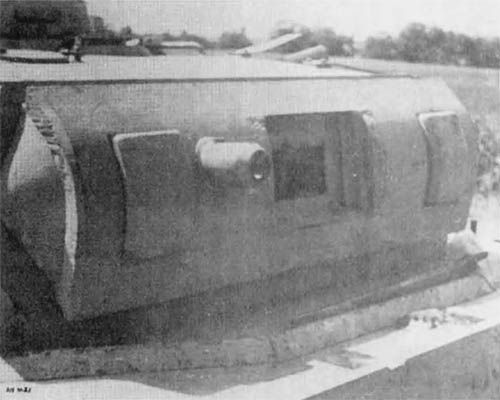
Internally, all the ammunition storage racks were removed and this, added to the internal space gained by removing the hull machine gun, allowed the Pz.Beob.Wg.III to carry its most important systems, a comprehensive set of radios. The Pz.Beob.Wg.III used a Fu 8 (20 km range), a Fu 4, a Fu.Spr.Ger.f (to communicate with the commander of the artillery; 4-5 km range), a Fu.Spr.Ger. (intercom), and a handheld Tornisterfunkgerat “t”.
The crew consisted of five persons: driver, observer and assistant observer, and two radio operators. This squad emphasizes the role of the Beobachtungswagen well – there was no gunner in the crew because there was no offensive armament.
In combat
Pz.Beob.Wg.IIIs were used on the front line alongside the fighting tanks (like the Panzer IV or Tiger). From this position, its crew could observe the battlefield and command artillery fire.
All Panzer III observation tanks were used in Wespe or Hummel-equipped self-propelled artillery units – according to the tables of organization released at the end of 1943, two tanks of this type were attached to each Wespe division, while three were attached per Hummel division. However, it was also sometimes used in assault artillery (StuG) units. The Pz.Beob.Wg.III was in service up to the end of the war. Unfortunately, none of this type of vehicle survives to the present day – only one turret can be viewed in Wehrtechnische Dienststelle Meppen.
Conclusion
The Panzerbeobachtungswagen III was an important vehicle in German combined-arms warfare and its role was crucial for the accurate deployment of artillery fire against enemy targets.
This modification was also a good use of an outdated tank that had lost all effectiveness on the battlefield. Because its role on the front line did not involve direct combat and the vehicle was purposefully made to look like a standard Panzer III (artillery observer vehicles are, understandably, a primary target to an enemy), the Pz.Beob.Wg.III is largely forgotten and its importance is underestimated.
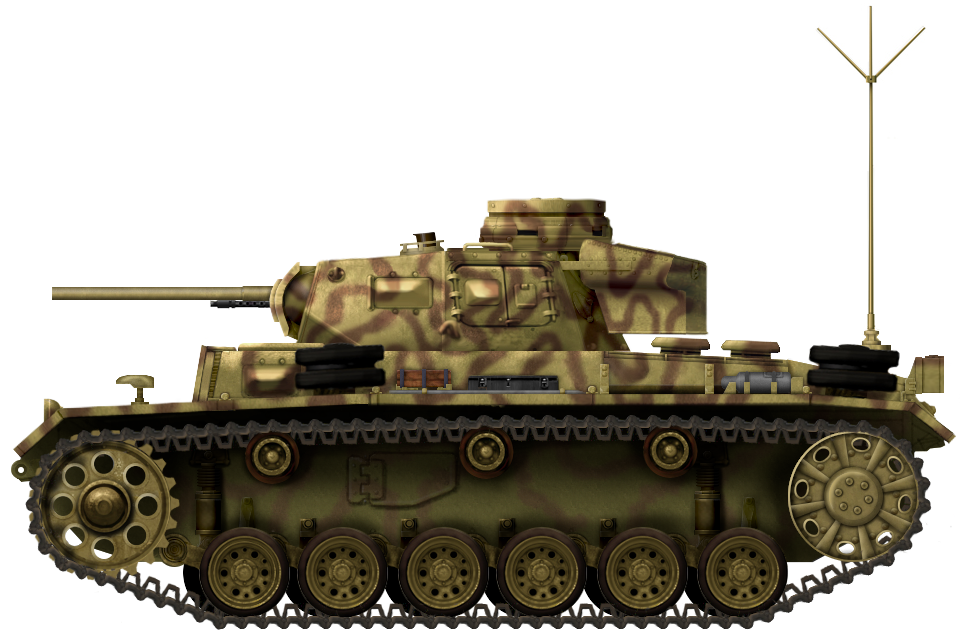
Gallery
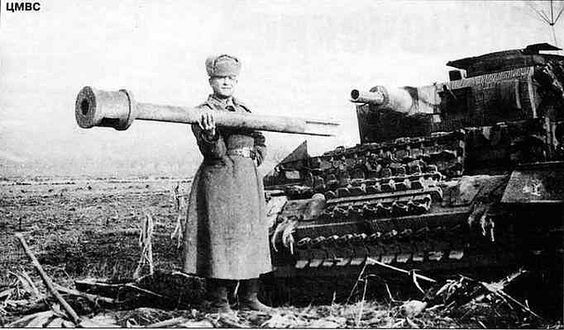
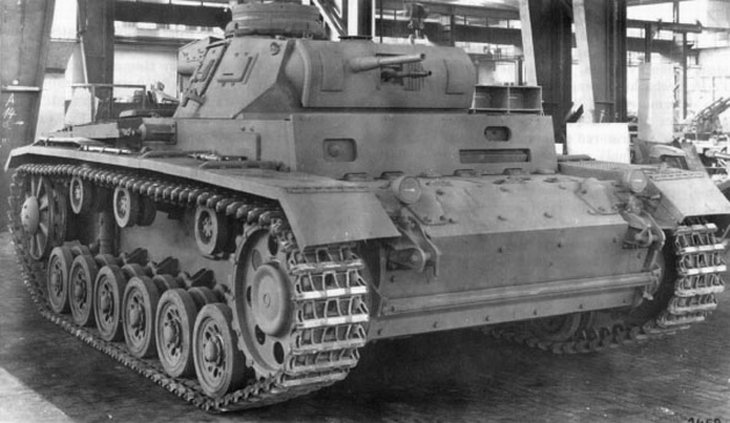
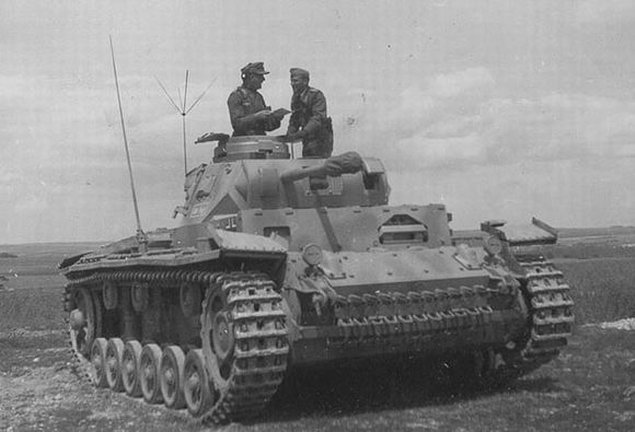
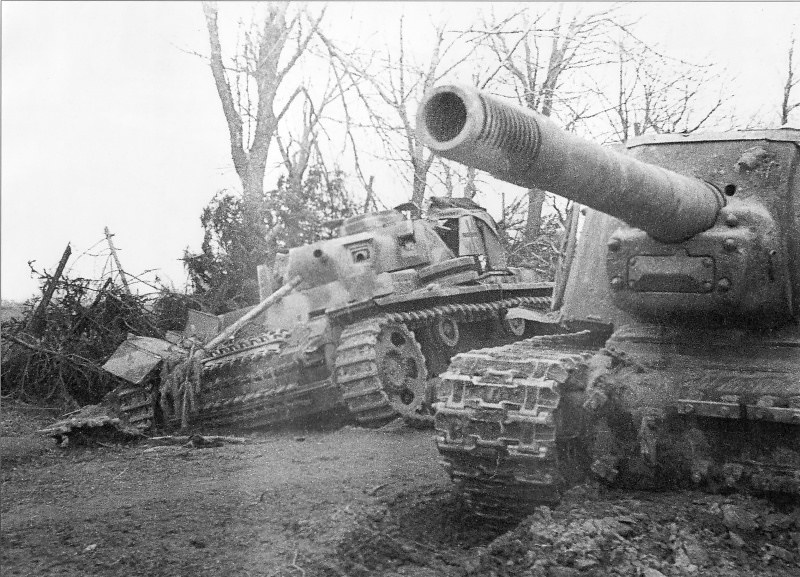
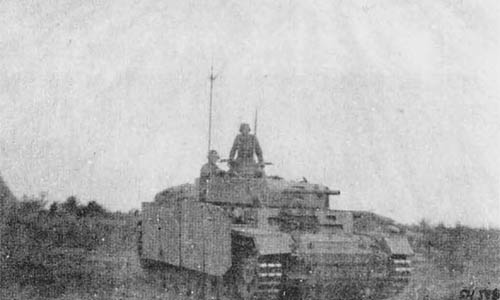
Specifications (for Ausf.G-based conversion) |
|
| Dimensions (L-W-H) | 5.38 x 2.91 x 2.435 m |
| Total Weight, Battle Ready | 19.3 tons |
| Crew | 5 (driver, two observers, two radio-operators) |
| Propulsion | Maybach HL 120 TRM (300 hp) petrol |
| Speed (on/off road) | 40/20 km/h |
| Range | 165 km |
| Armament | MG 34/42 with 2,400 rounds |
| Armor | maximum 50 mm |
| Total Production | 262 |
Sources
http://www.kfzderwehrmacht.de/Homepage_english/Miscellaneous/Kfz-Numbers/Sd__Kfz__Numbers/Sd_Kfz__143_Pz__Beob__Wg__III/sd_kfz__143_pz__beob__wg__iii.html
“Standard Catalogue of German Military Vehicles”, by David Doyle, copyright for the Polish edition, 2012, Vesper, Poznań
“Panzerbefehlswagen” by Janusz Ledwoch, copyright by the “MILITARIA” publisher, 2017, Warsaw
“Panzer Tracts” No. 3-4, by Thomas L. Jentz & Hillary Louis Doyle, 2011
The Spielberger German Armor & Military Vehicles Series. Vol. III “Panzer III & Its Variants”, Walter J. Spielberger
Red Army Auxiliary Armoured Vehicles, 1930–1945 (Images of War), by Alex Tarasov
If you ever wanted to learn about probably the most obscure parts of the Soviet tank forces during the Interwar and WW2 – this book is for you.
The book tells the story of the Soviet auxiliary armor, from the conceptual and doctrinal developments of the 1930s to the fierce battles of the Great Patriotic War.
The author not only pays attention to the technical side, but also examines organizational and doctrinal questions, as well as the role and place of the auxiliary armor, as it was seen by the Soviet pioneers of armored warfare Mikhail Tukhachevsky, Vladimir Triandafillov and Konstantin Kalinovsky.
A significant part of the book is dedicated to real battlefield experiences taken from Soviet combat reports. The author analyses the question of how the lack of auxiliary armor affected the combat efficacy of the Soviet tank troops during the most significant operations of the Great Patriotic War, including:
– the South-Western Front, January 1942
– the 3rd Guards Tank Army in the battles for Kharkov in December 1942–March 1943
– the 2nd Tank Army in January–February 1944, during the battles of the Zhitomir–Berdichev offensive
– the 6th Guards Tank Army in the Manchurian operation in August–September 1945
The book also explores the question of engineering support from 1930 to the Battle of Berlin. The research is based mainly on archival documents never published before and it will be very useful for scholars and researchers.

